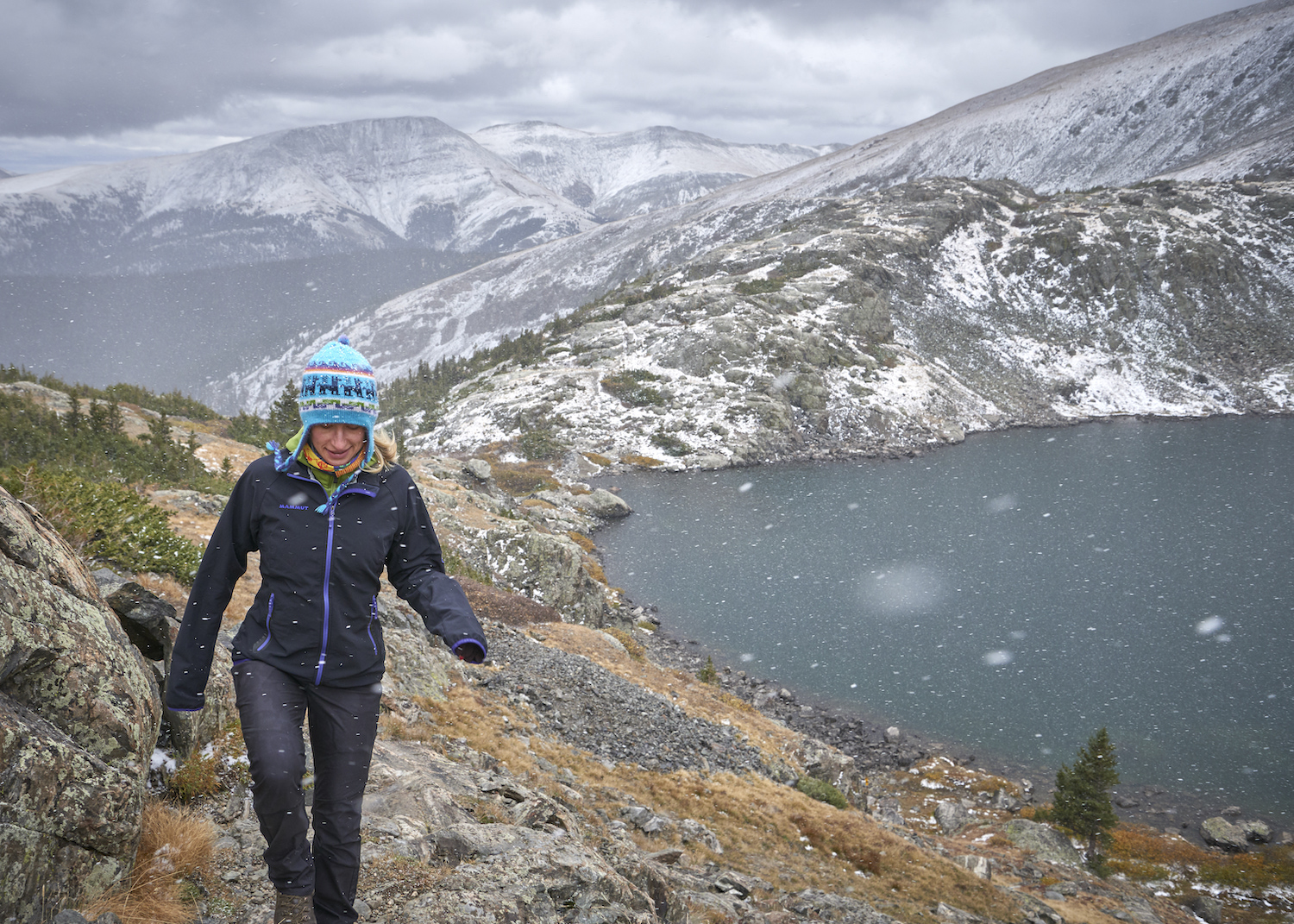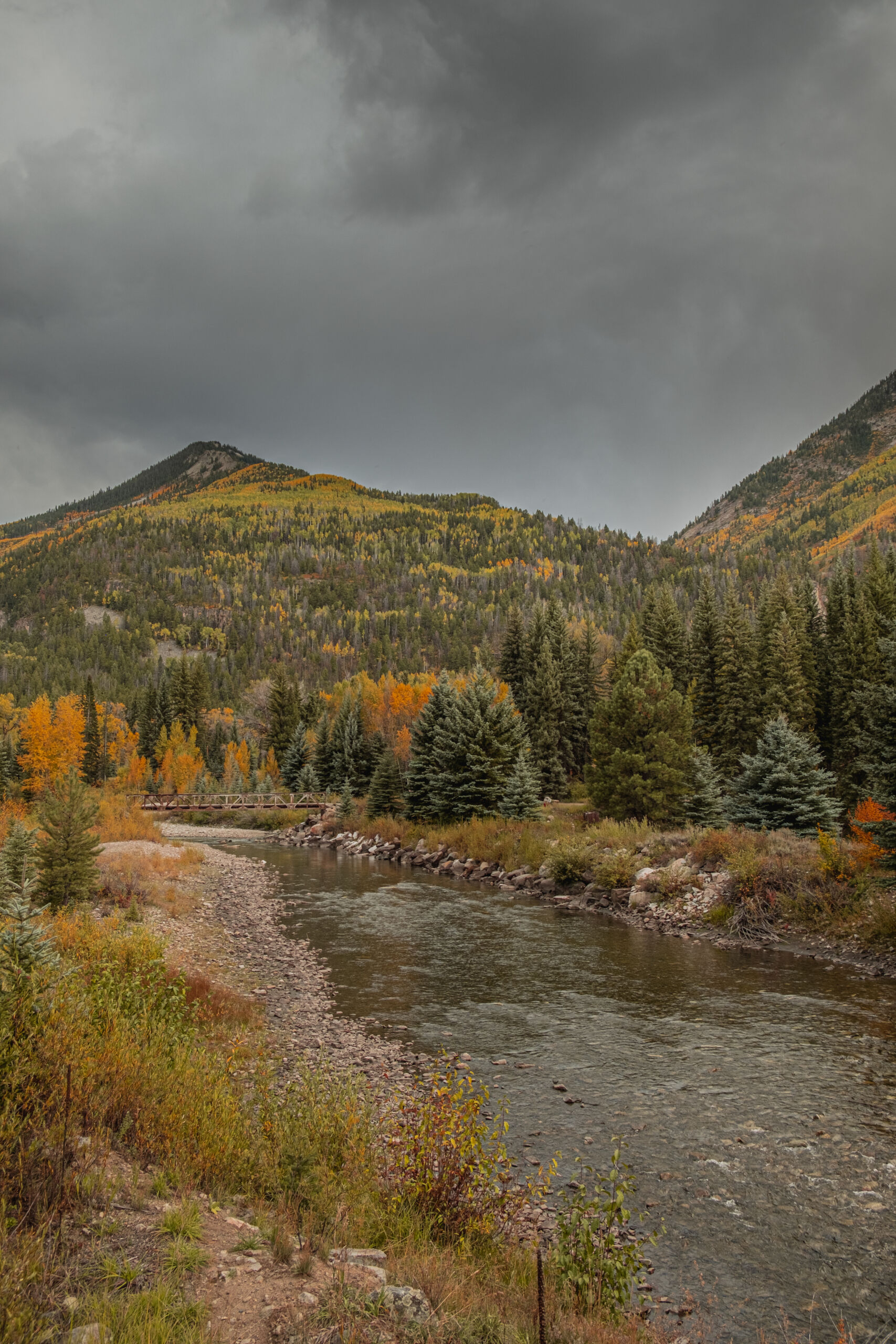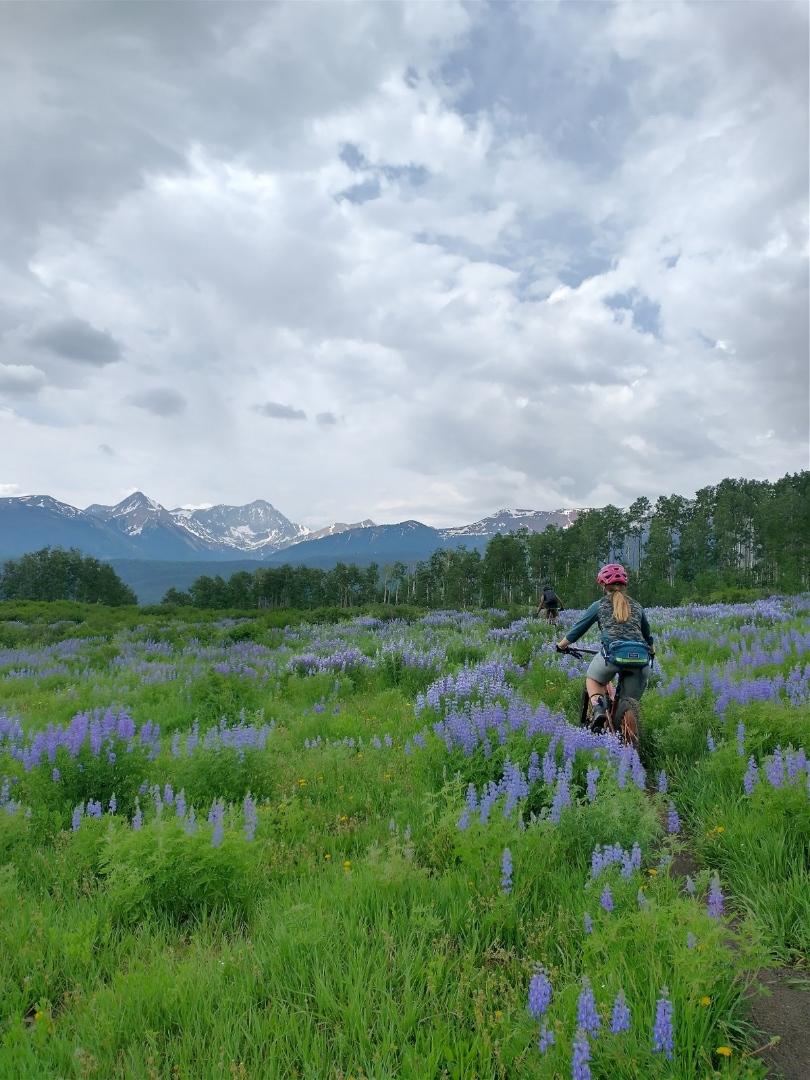Recreation ecology is the study of how outdoor recreation impacts the environment.
Wilderness Workshops supports sustainable recreation uses on our public lands, including in some cases the development of new recreation experiences; we know that having those opportunities right in our backyard is central to our community’s quality of life. WW staff and many of our members love spending time recreating on our public lands and draw inspiration from time in wild places.
At the same time, we know all uses, including recreation, can have real impacts to wildlife, vegetation, and soils. We are concerned about the growing impacts of recreation and other human development on wildlife and public lands in our region. No single trail can be held responsible for the declines in wildlife populations or other impacts – and yet collectively our trail systems and recreation uses are undeniably impactful.

Hiker in the Camp Hale-Continental Divide National Monument. Photo courtesy Jon Mullen/Ecostock.
Our communities and land managers must scrutinize recreation projects within the context that there is a limit to the amount of recreation our local public lands can sustain. A holistic and strategic approach, instead of piecemeal decision-making. is critical to the long-term ecological health of our public lands and wildlife.
WW works to ensure recreational development is planned and managed in a thoughtful sustainable way to ensure our enthusiasm for creating recreational experiences doesn’t cause undue harm. As part of this, we engage in individual projects and geographies where we see an opportunity to make a difference.
“The Ecological Consequences of Wildland Recreation” – A Report by Chris Monz
In 2023, Wilderness Workshop commissioned a study to better understand the environmental impacts of outdoor recreation on public lands in our geography. We wanted to learn more about approaches for effectively managing recreation to avoid, minimize, and mitigate impacts on public lands’ resources and values, including wildlife and their habitat. Going forward, this study will inform our advocacy and engagement on recreation planning and management across our geography. Second, we hope to provide land managers and decision makers engaged in recreation management with better information, guidelines, and recommendations on how to manage and plan recreation in an ecologically-minded fashion.
At the end of 2023, we were thrilled to host Dr. Chris Monz, the author of the report mentioned above, for a presentation on his paper. This presentation was given to local partners, management agencies and interested locals. Please view the recorded presentation below and note that the Q&A portion was not recorded.
Redstone to McClure Pass Trail
Pitkin County has proposed a proposed 7-mile section of trail connecting Redstone with McClure Pass, 5 miles of which would be on Forest Service Land. This trail segment is part of the much larger Carbondale to Crested Butte and Crystal Valley Trails but the Forest Service is only analyzing a small portion of the trail and its associated impacts instead of considering the entire set of impacts from the much longer trail, leading to an inherently short-sighted and flawed decision. Read more in our January 2023 response to the proposed Environmental Assessment and draft decision notice or our March 2023 response to the end of the objection period; you can also read a Aspen Times opinion column from Executive Director Will Roush.
“This is an 83-mile trail that the Forest Service has failed to comprehensively evaluate. The agency must holistically consider the cumulative impacts of recreation in our region before approving any new trail segments like this one. No single trail can be held responsible for the declines in wildlife populations or other impacts – and yet collectively our trail systems and recreation uses are undeniably impactful to wildlife and ecosystems. Approval of this trail segment turns a blind eye to the widely recognized recreation challenges facing the Crystal River Valley and the White River National Forest.” – Will Roush, Wilderness Workshop Executive Director

The Crystal River Valley. Photo courtesy Sam Sheppard.

A mountain biker on a designated trail in the Hay Park area.
Hay Park
We’ve been working with the White River National Forest, the Roaring Fork Mountain Bike Association (RFMBA), and Roaring Fork Outdoor Volunteers (RFOV) on a multi-year effort to close illegal user-created or “bandit” trails and to educate trail users in the Hay Park area (at the base of Mount Sopris) about the impacts of creating unauthorized trails. Along with our partners, we closed and revegetated user-created mountain bike trails that illegally entered the Maroon Bells- Snowmass Wilderness Area. We’re now inventorying and pushing the agency to close a network of illegally built trails that fragment important wildlife habitat to the north of the Hay Park Trail.
Travel Management Plan
In 2012, the White River National Forest (WRNF) completed a comprehensive travel management plan detailing which roads and trails would be open on the forest as well as establishing open areas and trails for snowmobiling in the winter. Additionally, the plan clarified that all recreational use other than foot and horse travel must occur on designated routes and trails. WW played a key role in shaping the outcome of the plan by advocating for ecologically minded decisions and pushing for the closure of roads and trail through sensitive wildlife habitat and in areas where they would cause ecological harm to water quality, wildlife and soils. The final plan closed 692 miles of “bandit” routes and decommissioned another 519 miles of roads. improving wildlife habitat across tens of thousands of acres of wildlands.

